Tea for breastfeeding mothers
Green Tea While Breast-Feeding: Harmful for Baby?
When you’re breast-feeding, you’ll need to pay close attention to your diet.
The things you eat and drink can be transferred to your baby through your milk. Women who are breast-feeding are advised to avoid alcohol, caffeine, and certain medications.
You’ve probably heard that tea has less caffeine than coffee, and green tea is considered healthy because of its antioxidants. So is it safe to drink green tea while you’re breast-feeding?
Read on to learn more about the caffeine content of green tea and what doctors recommend for women during breast-feeding.
Doctors don’t recommend giving young children caffeine, and the same goes for babies. While research hasn’t shown any permanent or life-threatening side effects from drinking caffeine during breast-feeding, it certainly can cause issues. Babies exposed to caffeine through breast milk may be more irritable or have trouble sleeping. And nobody wants a fussy baby if it can be avoided.
Dr. Sherry Ross, OB-GYN and women’s health expert at Providence Saint John’s Health Center in Santa Monica, California, says, “Caffeine can stay in your system for five to 20 hours. If you are taking medications, have higher body fat, or other medical problems, it may stick around longer.”
Caffeine can stay in a newborn’s system much longer than an adult’s system, so you could be dealing with fussiness and sleep problems for quite some time.
Green tea certainly doesn’t have as much caffeine as coffee, and you can even get caffeine-free varieties. An 8-ounce serving of regular green tea has about 24 to 45 mg, compared with 95 to 200 mg in brewed coffee.
“In general, you can drink one to three cups of green tea a day and not have any harmful effects on your newborn,” explains Dr. Ross. “It’s recommended not to consume more than 300 mg of caffeine a day if you’re breast-feeding.”
According to the American Academy of Pediatrics (AAP), breast milk contains less than 1 percent of the caffeine taken in by the mom. If you’re not drinking more than three cups, you should be OK.
If you’re not drinking more than three cups, you should be OK.
AAP also notes that after five or more caffeinated drinks is when you may start to notice the baby getting fussy. However, people’s metabolisms process caffeine differently. Some people have a higher tolerance for it than others, and this can hold true for babies as well. It’s a good idea to pay attention to how much you drink and see if you notice any changes in your baby’s behavior based on your caffeine intake.
You should keep in mind that chocolate and soda also contain caffeine. Combining these items with your tea drinking will up your overall caffeine intake.
If you’re worried about getting too much caffeine through your tea, there are caffeine-free options for green tea. Some black teas also naturally contain less caffeine than green teas. Although even caffeine-free products still have small amounts of caffeine, it’ll be significantly less.
Some other low- to caffeine-free teas that are safe to drink while breast-feeding are:
- white tea
- chamomile tea
- ginger tea
- peppermint tea
- dandelion
- rose hips
One or two cups of tea aren’t likely to cause issues. For moms who really need a serious caffeine fix every now and again, it is doable. With a little planning, it’s OK to have that larger serving or extra cup. Pump enough milk to store in the refrigerator or freezer for your baby’s next feedings.
For moms who really need a serious caffeine fix every now and again, it is doable. With a little planning, it’s OK to have that larger serving or extra cup. Pump enough milk to store in the refrigerator or freezer for your baby’s next feedings.
“If you feel as though you have consumed something unsafe for your baby, it’s best to ‘pump and dump’ for 24 hours. After 24 hours, you can safely resume breast-feeding,” says Dr. Ross.
Pump and dump refers to pumping your milk supply and getting rid of it without feeding your baby. This way, you work through the milk that might have too much caffeine.
Share on Pinterest
What Is It, How Do You Use It, Does It Work?
Share on PinterestWe include products we think are useful for our readers. If you buy through links on this page, we may earn a small commission. Here’s our process.
If you’re breastfeeding, chances are that your milk supply is a source of interest for you and others. With everyone wanting to discuss how breastfeeding is going, along with typical breastfeeding challenges, it might feel like there’s a lot of pressure on you to produce just the right amount of milk to feed your little one.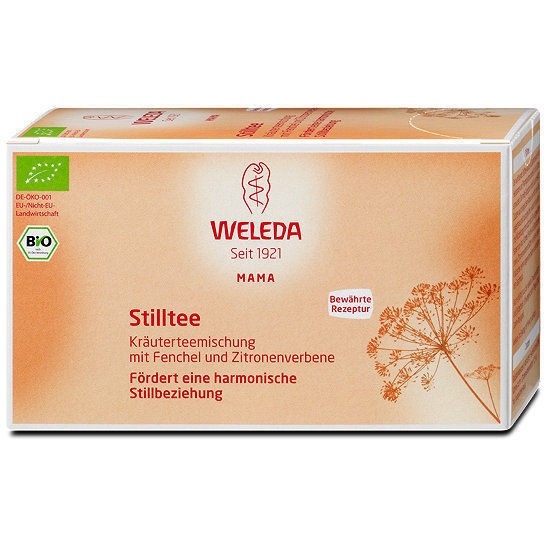
With such demands on breastfeeding mothers, it’s no surprise that products that claim to assist in milk production have entered the market. One such product is lactation tea.
Before you consume this product, you probably have a few questions: Is it safe? Does it actually work? What even is lactation tea?
Don’t worry, we’ve got you covered…
Lactation tea is a blend of herbs that can be consumed as tea, typically several times a day, during the postpartum period. It’s marketed as a supplement for increasing breast milk supply.
Does lactation tea actually live up to its name and produce more milk? Well, the scientific evidence on lactation tea is not entirely clear — more research is definitely needed. There is ample anecdotal evidence from women claiming that they noticed a positive increase in their milk supply while using lactation tea.
Even if the herb blends in these teas aren’t effective at triggering more milk production, drinking extra liquid several times a day will help keep you hydrated — a key to good milk production.
Plus, taking time to care for yourself — which can release the relaxed, loving hormones shown to be beneficial to milk production — is a good thing, so there may be something to using lactation tea.
Some of the common herbs found in lactation teas are fenugreek, blessed thistle, fennel, stinging nettle, goat’s rue, moringa, and milk thistle.
- Fenugreek is an herb with a taste similar to maple syrup. While there is still much research to be done on fenugreek, limited studies suggest that it may help increase milk production. It should, however, be avoided during pregnancy as it can cause uterine contractions. (There is also some concern that fenugreek acts like estrogen and may be unsafe for women with hormone-sensitive cancers.)
- Blessed thistle is commonly used for digestive issues as well as part of lactation teas. Unfortunately, like many herbs there is not much scientific data available on its actual usefulness of it in increasing breastmilk production.
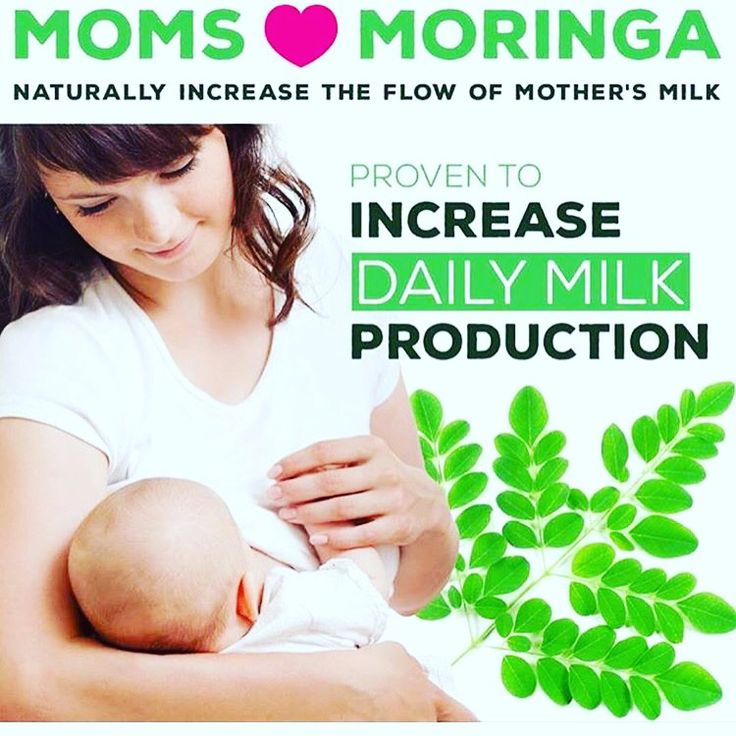
- Fennel has not been thoroughly researched enough to prove effectiveness for increasing lactation. Thought two small studies found it may help increase milk volume.
- Stinging nettle is full of nutrients and antioxidants. It is thought to reduce inflammation and lower blood pressure. Although it is not safe for pregnant women to consume due to its potential to cause uterine contractions, there are anecdotal stories about its ability to assist with lactation. Like most herbs, more research is needed to scientifically prove this.
- Goat’s rue is said to help the liver, the adrenal gland, and digestion in addition to its potential lactation benefits. Although the studies on Goat’s Rue have been small and more research is still needed to prove its milk producing benefits, it is thought to be a well-tolerated herb.
- Moringahas been popular around the world for many years, but is just recently becoming well known in North America.
 Hyped for its nutrient content as well as its antioxidant and anti-inflammatory effects, the herb has been studied on animals, but more research needs to be done on humans. To date, not many side effects have been reported.
Hyped for its nutrient content as well as its antioxidant and anti-inflammatory effects, the herb has been studied on animals, but more research needs to be done on humans. To date, not many side effects have been reported. - Milk thistle is another herb thought to be good for the liver, bones, and brain. Like many herbs included in lactation teas, only small scientific trials have been performed to prove its effectiveness in increasing lactation. Due to the lack of information available on its side effects, women who are pregnant are generally advised to avoid this herb.
One ingredient you won’t probably notice in lactation tea is sage. This herb is typically viewed as drying up breast milk and sage tea is often recommended during weaning.
It’s important to note that while some of the effects of herbs and herbal products are known there is not yet sufficient research on many aspects of the herbs and herbal blends to know all of the possible effects, especially during pregnancy and breastfeeding.
Therefore, it’s important to talk to your doctor before taking herbal-based products and only take blends from sources that you are comfortable with.
There are some herbs that are not safe to consume while breastfeeding. Before consuming any herbal blends, it’s important to check with your doctor or lactation consultant for the most up-to-date listings of safe and unsafe herbs for breastfeeding mothers.
While you should always follow the specific instructions that come with your lactation tea, in general, lactation tea is brewed like most other teas (i.e. use hot water, steep the herbs, and drink). Like most teas, lactation tea can be brewed one cup at a time or as a larger batch to be consumed over time.
It can usually be sweetened, iced, or have other flavors added to it. In general, somewhere between 1 to 3 cups a day is suggested, but always note how much is recommended for your specific type of tea.
You can find lactation tea in natural foods stores or shop for them online. Here are some popular brands:
Here are some popular brands:
Traditional Medicinals. The Organic Mother’s Milk Tea sources its herbs from ethical trading partnerships. It is non-GMO verified and all ingredients are certified organic, kosher, and caffeine-free. The tea does have a distinct licorice taste that may not appeal to all palates.
Pink Stork. In addition to mint and vanilla flavored lactation teas, this company also makes a strawberry passion fruit postpartum recovery tea. The lactation teas are made without GMOs, gluten, wheat, sugar, dairy, animal products, and soy. The tea sachets are plant based, and made of 100 percent biodegradable tea bag material. The herb mixes use fenugreek, nettles, and milk thistle as its key herbs. One thing that sets Pink Stork apart is that it identifies as a woman-owned business.
UpSpring Milk Flow. Known for its unique chocolate and berry flavored powdered drink mixes, this brand includes fenugreek and blessed thistle as key herbs in its mix. These mixes are all-natural and non-GMO.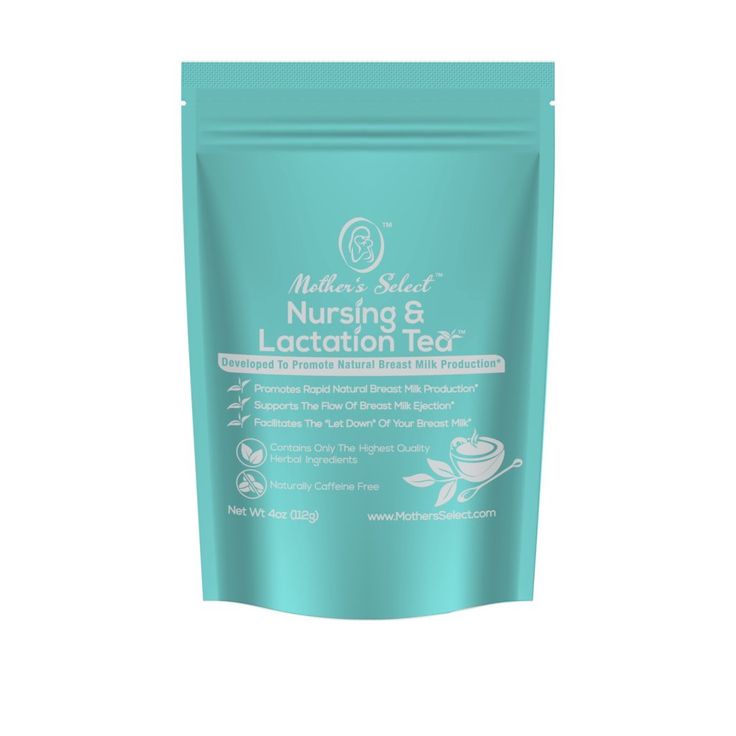 They do contain dairy and soy though. Instead of drinking as traditional tea, UpSpring suggests combining the chocolate mix with milk or adding to a smoothie or yogurt. The company suggests adding the berry flavor to cold water or juice.
They do contain dairy and soy though. Instead of drinking as traditional tea, UpSpring suggests combining the chocolate mix with milk or adding to a smoothie or yogurt. The company suggests adding the berry flavor to cold water or juice.
Earth Mama Organics. The Milkmaid Tea comes in 85 percent post-consumer recycled and recyclable cartons. It is USDA certified organic, non-GMO verified, and certified kosher.
Milkmakers. This brand uses certified organic ingredients in their teas that are naturally caffeine-free. What sets it apart from other brands is the unique flavors it offers like coconut, lemon, and chai.
Oat Mama. This company offers tea blends with organic herbs that are fenugreek- and caffeine-free. This company likes to point out that their teas have zero calories!
Herb Lore. The Moringa Blend loose leaf tea is caffeine-free, non-GMO, gluten-free, vegan, and made in the United States. It uses moringa instead of fenugreek to help boost milk supply, so it doesn’t have the strong licorice-like taste some people associate with fenugreek.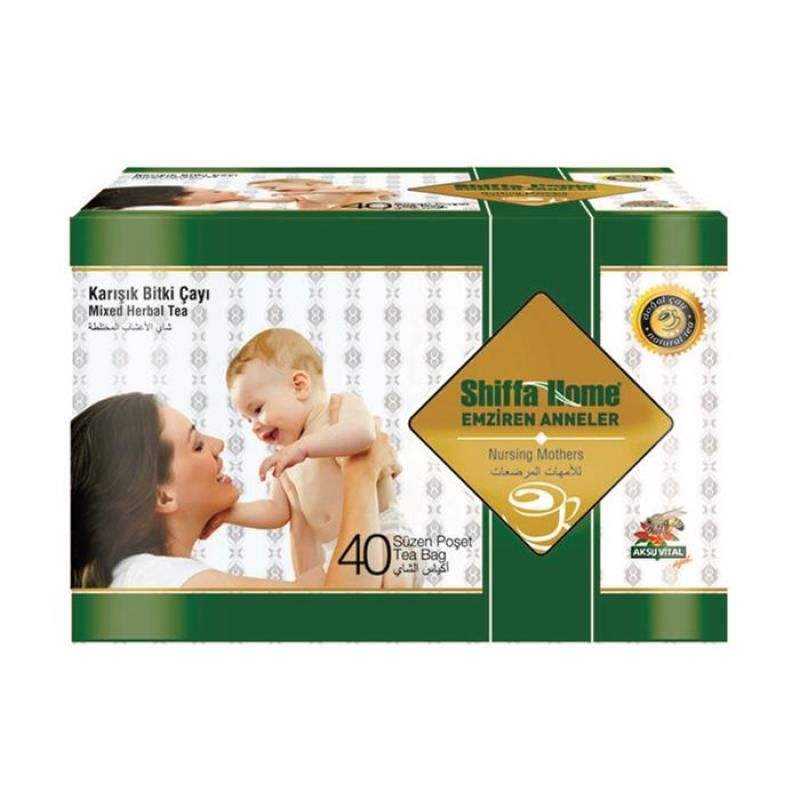
If tea is not your preferred drink or you’re not getting the reaction you had hoped for, you don’t need to give up on increasing your milk supply. There are plenty of other methods to try. Some of the most popular include:
- Eat lactation cookies and bars. Expect a lot of oats, baker’s yeast, wheat germ, and flaxseed!
- Enjoy some extra skin-to-skin time with your baby. This will not only help you and baby feel secure, but it will help inspire those loving, relaxed feelings that can help get milk flowing.
- Avoid certain medications, tight fighting bras, and smoking, which can all negatively impact milk production.
- Stay hydrated. Staying well hydrated is important not only for your own health, but also for producing lots of breast milk!
- Get a massage or extra sleep. We know rest and relaxation may be hard to come by with a baby in the house, but just like extra skin-to-skin time, this can help increase the hormones needed to produce and release more breast milk.

- Feed or pump frequently. Breasts produce milk based on a theory of supply and demand: The more you extract and the more frequently you extract milk, the more breast milk the body will think it needs to make.
Breastfeeding is a unique experience and a personal journey. For women who want to increase their milk production, there are lots of options to try, including lactation teas.
Lactation tea may not be the solution to the perfect milk flow for every person. And research isn’t clear if it scientifically does increase milk supply.
However, if you stick with a source you feel comfortable with, consume a normal amount, and make sure to avoid any allergens, you will have gotten some extra hydration and nutrients — and possibly a blissful moment to yourself!
Is it possible to drink tea while breastfeeding
- Benefits of tea during breastfeeding
- Which tea is better for breastfeeding: black or green?
- Which tea supplements can be used during lactation
- Other useful tea drinks during lactation
During the lactation period, a nursing woman is advised to carefully monitor the diet and exclude foods that can harm the baby from the daily menu. As a natural stimulant of milk production, mammologists recommend drinking tea. But before drinking such a drink, it is necessary to take into account its beneficial properties and decide how safe it will be for the child.
As a natural stimulant of milk production, mammologists recommend drinking tea. But before drinking such a drink, it is necessary to take into account its beneficial properties and decide how safe it will be for the child.
A nursing mother, in order to compensate for the lack of fluid in the body, should consume about two liters of water per day. It should be borne in mind that not all drinks can be useful during lactation. The most safe and hypoallergenic liquid is distilled water. In order not to go to extremes, it is recommended that a nursing mother drink drinks that have a positive effect on health and at the same time have a pleasant taste and aroma. This includes fermented milk drinks, juices made from natural ingredients, milk and teas.
It is known that tea itself does not contribute to the stimulation of the lactation process. The mechanism of action of this drink is the same as that of other hot liquids: after ingestion, hot tea improves the flow of milk to the mammary glands.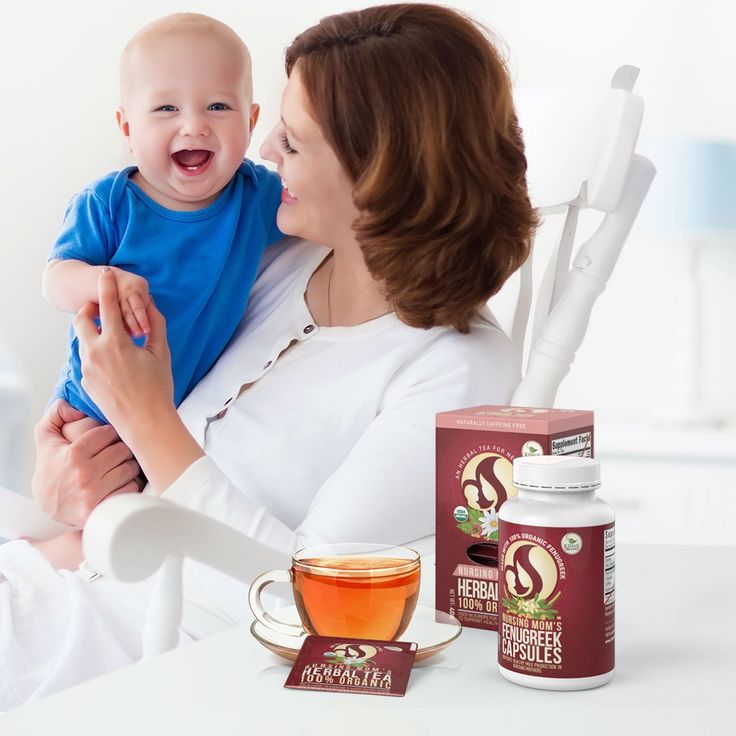
For a long time, pediatricians have limited the use of tea drink due to the presence of caffeine in it, which has a pronounced tonic effect. Today, such a categorical ban has been lifted. A cup of black or green tea can contain about 85 mg of caffeine, while the allowable dose for a person per day is about 1000 mg. Therefore, a couple of cups of tea drink a day should not harm the child. So in the diet of a nursing mother, different varieties of tea can be safely present.
If you drink tea while breastfeeding in moderation - no more than 2-3 cups a day, then there will be no harm to the baby. At the same time, it is recommended to give preference only to high-quality and natural drinks without artificial colors and impurities. It is better not to use tea in bags, but to buy tea leaves by weight. As an additional component, you can add milk, herbs, berries and fruits to the drink. To find out if a new tea is suitable for a nursing mother, it is recommended to drink a little freshly brewed drink 30 minutes before feeding the baby and then evaluate the reaction of the newborn's body.
Which tea is better for breastfeeding: black or green?
Since each person has their own taste preferences, it is recommended that a nursing mother drink the tea drink that she likes the most in terms of taste and effect. Black tea has a stimulating effect on the nervous system, but when consumed in moderation with milk, it relieves fatigue and has a calming effect. The tea leaves of black tea go through a fermentation process, and the longer it lasts, the better and nobler the taste of the tea drink will be, but at the same time it has a lower content of catechins. These substances are necessary for the baby, and for this reason, pediatricians advise giving preference to green tea. At the same time, opponents of the use of green tea note that it contains a large amount of caffeine, as in natural coffee.
Green tea relaxes the ducts of the mammary glands, but does not significantly affect lactation. As a natural drink, green tea contains such useful components:
- tannin - this substance improves the functioning of the digestive system, strengthens blood vessels and has an antimicrobial effect;
- organic acids, amino acids, vitamins and minerals that normalize the functioning of the nervous system and improve the condition of the body as a whole;
- bioflavonoids with a powerful antioxidant effect.

If the baby is too restless, doctors recommend giving preference to white tea, which undergoes very weak fermentation. Herbal, fruit and flower teas do not contain caffeine at all. A drink like South African rooibos has a minimal list of contraindications and a high content of vitamin C. It also contains beneficial minerals that ease and soothe the work of the gastrointestinal tract in disorders and treat heartburn. In addition, this tea reduces the manifestations of an allergic reaction and strengthens the entire body. The main rule when choosing such a drink is to make sure that the composition of the tea does not contain harmful impurities and components.
The baby can become capricious and too irritable even against the background of drinking green tea: he may have problems sleeping. If such a reaction is observed, then it is also better to refuse to use green tea. Replace green tea with black tea with less caffeine. There is nothing wrong with a nursing mother drinking even more than one or two cups of tea a day, as long as it does not negatively affect the baby. Since everyone is different, many breastfeeding mothers can drink any drink with safe additives without any problems associated with the deterioration of the baby's well-being.
Since everyone is different, many breastfeeding mothers can drink any drink with safe additives without any problems associated with the deterioration of the baby's well-being.
Which tea supplements can be used during lactation
The child begins to receive the protection of the mother's immunity even in the process of intrauterine development. It is possible to provide him with reliable protection against various infections after birth with the help of regular tea consumption. For this, ordinary black tea with condensed milk is suitable.
Herbal supplements in the form of lemon balm are also suitable, as a good remedy for relieving intestinal colic and normalizing peristalsis: lemon balm tea will improve bowel function and reduce pain symptoms. Chamomile tea is simply indispensable for breastfeeding, when the baby has the first signs of a cold. As a natural antiseptic, chamomile has an antimicrobial effect no worse than any expensive drug. The advantage of this drink is the safety of chamomile tea for the child's body and the ability to bring down the temperature, as well as remove pain in the event of an inflammatory process.
Lemon tea also has a protective and regenerating property, serves as a good natural antibiotic and stimulant of the immune system. But during breastfeeding, drinking such tea should be done with caution and make sure that the baby does not have an allergic reaction. To understand whether it is possible to drink tea with lemon during lactation, you need to drink about a quarter cup of a tea drink and observe the reaction of the baby's body during the day. Normally, no redness, rashes should appear on the child's body, and there should also be no changes in behavior. If all is well, it will be possible to increase the intake of lemon tea to 2 or 3 cups per day.
Replace lemon tea with bergamot tea. Tea with bergamot during lactation has a preventive effect and protects the newborn baby from viral infections. Such a tea drink can be introduced into the diet of a nursing mother from the first days of a child's life and not be afraid that it will cause the development of allergies or dysbacteriosis.
Thyme tea has a calming effect, which is ideal for teething in a baby or if he is worried about prickly heat. Thyme tea has an anti-inflammatory, sedative and beneficial effect on the digestive system. The drink relaxes the body and reduces pain.
Other healthy tea drinks during lactation
While breastfeeding, a breastfeeding mother can also try Chamomile Flower Premium tea. This drink promotes good digestion, treats constipation and diarrhea, and reduces gas formation. Chamomile tea saturates the body with the necessary amount of fluid and helps in the treatment of peptic ulcer or colitis. Chamomile flowers contain a large number of useful substances: polysaccharides, vitamins, organic acids, minerals.
Chamomile tea helps with colds, well relieving the feeling of itching and sore throat. Even small children can treat a cough with chamomile. The addition of a slice of lemon or honey helps to enhance the therapeutic effect of the drink. Chamomile tea tidies up the nervous system and relieves gastrointestinal problems associated with stress.
Ginger matcha tea also has medicinal properties. It is suitable for a nursing mother as a substitute for regular coffee or tea, as it does not contain caffeine. Ginger drink has a characteristic taste and can be prepared with milk or water. Such tea has an antibacterial effect, helps with colds and strengthens the immune system, quenches thirst well and gives a charge of vivacity for the whole day.
Another useful tea drink is lavender flowers, which has a pronounced antispasmodic and anti-inflammatory effect. Lavender drink has a delicate oily taste and persistent aroma, and also contains an aftertaste with light herbaceous notes. This tea goes well with honey and a slice of lemon. This plant is often used in medicine for diseases of the gastrointestinal tract and problems with the nervous system. Lavender infusion has a deep emotional relaxation, improves tone and has an antiseptic effect. It is brewed at the rate of 3 g of tea leaves per 120 ml of water with a temperature of 80-95 degrees.
Tea called Ku Qiao Mei, or as it is also called Tatar buckwheat, has a sweetish taste and an appetizing aroma of vanilla cookies. The color of the tea drink is bright yellow and it is rich in vitamins P, E, C, group B. Rutin, which is contained in the Tatar buckwheat plant, helps strengthen immunity, regulates blood pressure, strengthens capillary walls and improves blood microcirculation. Such tea should be brewed with purified water at a temperature of 95 degrees at the rate of 1 teaspoon per 200 ml of water.
It is recommended to buy tea for a nursing mother only of high quality in the form of tea leaves and without the addition of flavors or other chemical components. Each tea drink has its own secrets of brewing, which must be observed in order to maximize the disclosure of its beneficial properties.
Before giving preference to any drink, it is advisable to make sure that the child does not have an allergic reaction to it. Black tea can only be brewed once, while green tea can be reused. Nursing mothers are not recommended to drink tea drinks that can lower blood pressure.
Nursing mothers are not recommended to drink tea drinks that can lower blood pressure.
We are trusted
Trading House "Moschaitorg" has been operating since 2014. During this short period of time, we have managed to establish ourselves as the best company for the wholesale supply of tea and coffee products throughout Russia. Our responsible approach to each order guarantees us the trust and love of customers. We make sure that cooperation with our company is comfortable and long-lasting. We are trusted by brands such as:
Should a nursing mother follow a diet, rely on tea for lactation and supplement her baby with water | 45.ru
Listening to uninvited advisers, mothers often ruin breastfeeding themselves
Photo: Regional perinatal center
Share
. We will discuss how to survive postpartum depression, the body after childbirth, childhood tantrums, outdated ideas about child care and much more.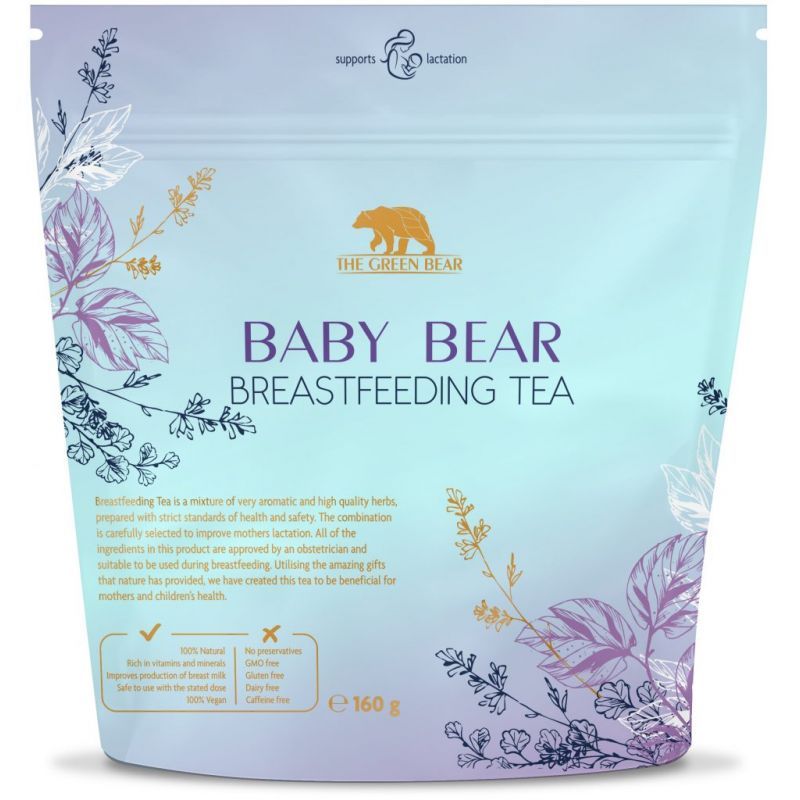
Today's episode is about breastfeeding. Breastfeed - well done. Breastfeeding after two years - crazy, why so long? “After a year, there is nothing useful in milk.” It hangs on my chest all day - I taught it myself. The child's cheeks are red - it means that you are not following the diet. The baby is gaining weight quickly - you feed often, the baby is slowly gaining weight - there is not enough milk, add a mixture. These moralizing pour on a nursing woman endlessly. We asked the head midwife of the perinatal center, breastfeeding consultant Daria Korennaya to tell us how to filter unsolicited advice, whether it is possible to increase the amount of breast milk with the help of tea, and whether there is a chance to return the shape of the breast after feeding.
Daria Korennaya advises not to buy nipples and pacifiers at all if the mother is determined to breastfeed
Photo: Daria Korennaya
Share
— Young mothers face quite a lot of false information on the Internet. Now they write about breastfeeding in blogs, but not everything can be trusted, says Daria Korennaya. - Moms are often attacked by advisers. What, you don't drink water? What, are you not feeding properly? The child is crying - it means he wants to eat. Restless? Probably, the tummy hurts, give dill water. And instead of just enjoying motherhood, breastfeeding, the mother begins to doubt herself, seek out specialists, thinking that something is wrong with the child.
Now they write about breastfeeding in blogs, but not everything can be trusted, says Daria Korennaya. - Moms are often attacked by advisers. What, you don't drink water? What, are you not feeding properly? The child is crying - it means he wants to eat. Restless? Probably, the tummy hurts, give dill water. And instead of just enjoying motherhood, breastfeeding, the mother begins to doubt herself, seek out specialists, thinking that something is wrong with the child.
I would advise mothers to listen first of all to the recommendations of the World Health Organization from the Breastfeeding Guide. The success of breastfeeding lies in the following simple rules that are very important for the mother to follow in order to continue to feed the baby and not worry about the quality and quantity of milk. The first principle is early attachment to the breast after childbirth - no later than 30-40 minutes, perhaps 60 minutes, regardless of whether the birth was natural or caesarean section.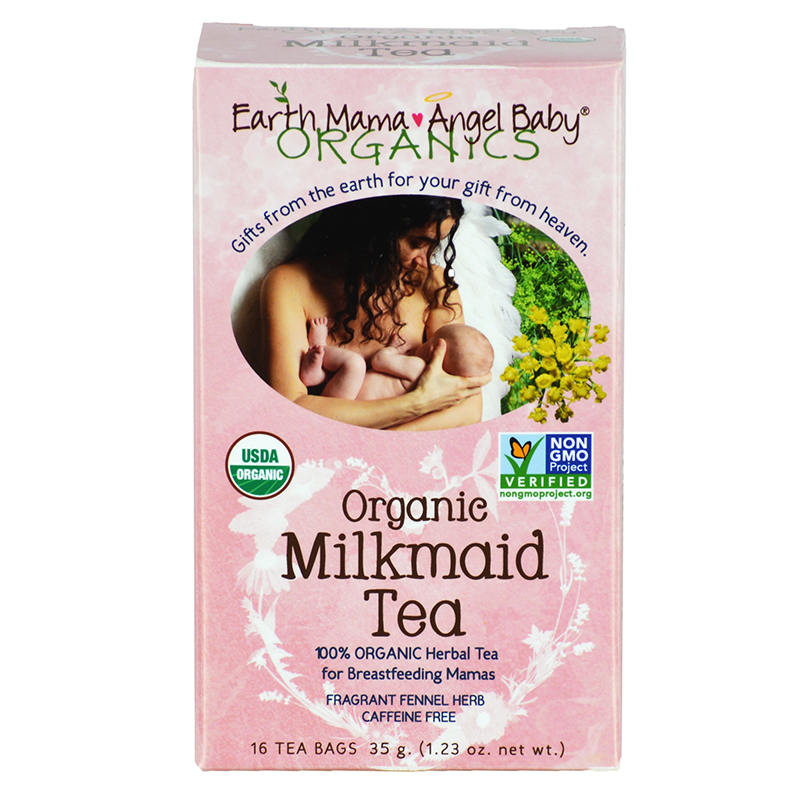 The second principle is feeding on demand, and not by the hour (1.5–2 hours during the day, 3 hours at night), this requirement is expressed both by the child and by the mother. And the third is a categorical ban on pacifiers, nipples.
The second principle is feeding on demand, and not by the hour (1.5–2 hours during the day, 3 hours at night), this requirement is expressed both by the child and by the mother. And the third is a categorical ban on pacifiers, nipples.
But somehow you don’t need to prepare the breast for feeding - the body will do everything itself
Photo: Regional Perinatal Center
covers breast milk, 80-90% of it consists of water. In the first six months of life, the ideal food for a baby is only breast milk.
During pregnancy, a woman's body undergoes unique transformations. When the expectant mother bears a child, the active growth of glandular tissue begins, which then participates in the production of breast milk. For some, the breast increases, for others it remains the same, the nipple and areola acquire a brown tint. All this happens by itself, and it is not necessary to somehow specially prepare the breast for feeding - rubbing, stretching, as it is advised. The shape of the nipples does not affect the success of breastfeeding. We are all individuals. If in the process of feeding there are difficulties with attaching the baby, it is necessary at the stage of the maternity hospital, together with the staff, to work on the attachment technique.
The shape of the nipples does not affect the success of breastfeeding. We are all individuals. If in the process of feeding there are difficulties with attaching the baby, it is necessary at the stage of the maternity hospital, together with the staff, to work on the attachment technique.
In general, this concept - "dairy" or "non-dairy" woman - is a big nonsense. This is probably where this belief came from. Previously, when it was customary to feed a child by the hour, this strict regimen led to the fact that a woman could feed a child for up to three or four months, and then there was less milk because of these rare attachments. It is important to understand that milk is produced as much as the baby needs, the main thing is to follow the basic principles of breastfeeding.
The more often you put the baby to the breast, the more milk will be
Photo: Artem Ustyuzhanin / E1.RU
Share
At the time of birth, there is a supply of first milk in the breast, which is called colostrum, it is very nutritious and has unique protective properties, so it is very important that the baby suckle and receive this first milk. Often mothers, seeing how the child cries or is often applied to the breast, think that he is hungry - he did not have enough milk. But breastfeeding 15-20 times a day for a child is the norm. The more often the baby is applied, the more milk is produced - demand creates supply. A small amount of milk is usually associated in general with improper organization of breastfeeding. When we give a baby a pacifier, without indications we supplement with formula, relying only on our feelings, this all harms the success of breastfeeding.
Often mothers, seeing how the child cries or is often applied to the breast, think that he is hungry - he did not have enough milk. But breastfeeding 15-20 times a day for a child is the norm. The more often the baby is applied, the more milk is produced - demand creates supply. A small amount of milk is usually associated in general with improper organization of breastfeeding. When we give a baby a pacifier, without indications we supplement with formula, relying only on our feelings, this all harms the success of breastfeeding.
In the first days, the child has enough nutritious colostrum to saturate
Photo: Artem Ustyuzhanin / E1.RU
Share
Mom decides to give the mixture so that the child is full, to calm him down, to help him. But even when receiving several servings of the mixture, the child may experience an allergic reaction to cow's milk protein. Of course, there will be those who disagree with me, they will say that they fed the child with formula and he grew up absolutely healthy, smart, with four higher educations.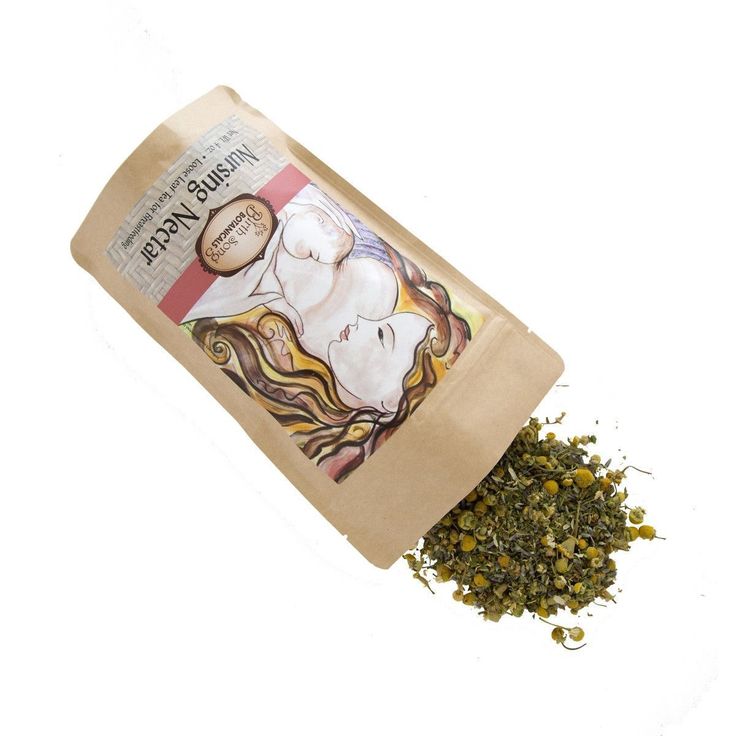 This is great, but we must understand that breastfeeding is, on the one hand, the choice of a woman, on the other hand, a matter of the health of the child as a whole. Breast milk is easy to digest, but formula is harder. Babies sleep longer with a dose of formula. But it is not necessary to give it without any evidence. If you organize the feeding process correctly, then milk will be enough.
This is great, but we must understand that breastfeeding is, on the one hand, the choice of a woman, on the other hand, a matter of the health of the child as a whole. Breast milk is easy to digest, but formula is harder. Babies sleep longer with a dose of formula. But it is not necessary to give it without any evidence. If you organize the feeding process correctly, then milk will be enough.
In fact, the composition of breast milk adapts to the age of the child. And after a year, the nutrients from it do not go anywhere, breast milk is rich in immunoglobulins, which is why WHO recommends feeding a child up to two years and longer. And from the point of view of women's health - the longer the mammary gland prolactes, the lower the risk of developing breast diseases.
No drugs have been developed to increase milk supply. There is simply no really “working” tea to improve lactation. If a woman has a need to drink tea, which supposedly stimulates lactation, and her mother is calmer from this, let her drink it. But only to comfort my mother. If the mother has a task to increase the amount of breast milk, then you need to work with attachment to the breast and increase the number of these attachments. Two hormones ensure the production and release of breast milk - these are oxytocin and prolactin (the hormone is produced at night - this is why feeding at night is important).
But only to comfort my mother. If the mother has a task to increase the amount of breast milk, then you need to work with attachment to the breast and increase the number of these attachments. Two hormones ensure the production and release of breast milk - these are oxytocin and prolactin (the hormone is produced at night - this is why feeding at night is important).
Fortified mixtures. If a woman eats fully, then there is no need for them. If a woman sits on buckwheat and water, then it is necessary to enrich the diet and you can use fortified mixtures.
But tea "for lactation" does not affect the amount of breast milk in any way
Photo: Artem Ustyuzhanin / E1.RU
Share
Today there is no such thing as a diet for a nursing mother. Mom's diet should be varied and complete. There are top allergens: nuts, citrus fruits, fish, celery, shrimp, chocolate, which to some extent can cause allergies in a child.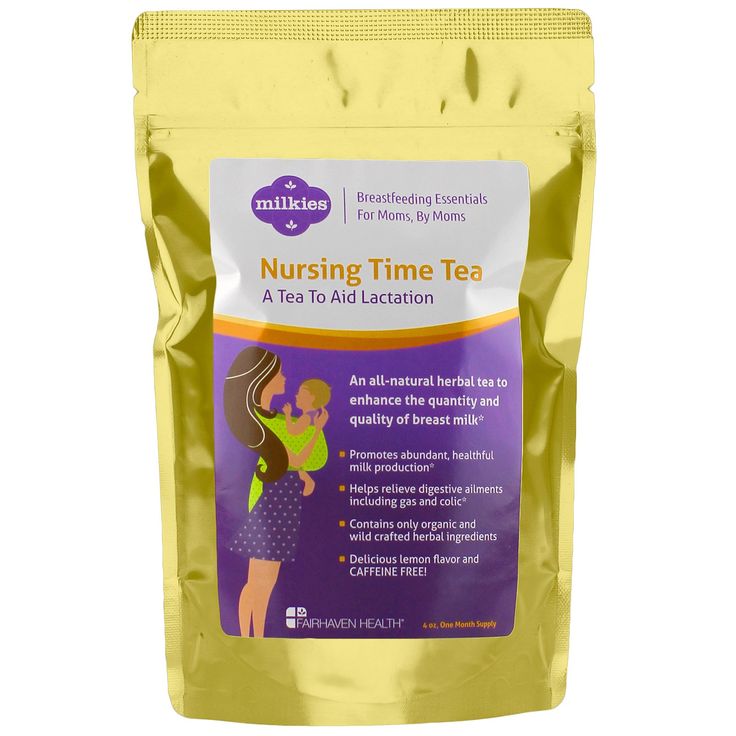 But it all depends on the allergy history of the family. In the first month, it is recommended to eat processed food, then gradually introduce raw vegetables and fruits, focus on the child and expand the diet over time. I advise mothers of high-quality and varied food, and not to eat buckwheat, boiled chicken and biscuit cookies for the entire period of feeding the child.
But it all depends on the allergy history of the family. In the first month, it is recommended to eat processed food, then gradually introduce raw vegetables and fruits, focus on the child and expand the diet over time. I advise mothers of high-quality and varied food, and not to eat buckwheat, boiled chicken and biscuit cookies for the entire period of feeding the child.
— Can a nursing mother have coffee?
- Yes, again, WHO recommendations - up to three cups of 150 milliliters. But caffeine is also found in tea, so the best drink is water in sufficient quantities.
— And a glass of wine or a glass of champagne at the festive table?
- Absolutely not, ethanol is toxic to the child's brain.
— When taking antibiotics, other pills, do you need to urgently stop feeding? Is there any online resource where you can check the compatibility of HB and such therapy?
- Let's be reasonable. If a woman needs treatment, then she should consult a doctor, prescribe treatment on her own and decide whether it can be combined with breastfeeding, it is simply dangerous.
After a child's year, breast milk remains just as useful, so WHO advises breastfeeding until two years of age
Photo: Maxim Vorobyov / Е1.RU From six months - introduce complementary foods, gradually transfer to the family table. Weaning starts from one and a half years, when it is already possible to negotiate with the child, to build boundaries. There is such a thing - self-weaning, when a child between three and four years old himself refuses to breastfeed. If we talk about weaning at the request of the mother, then the process of weaning should be gradual.
Let's not scourge mothers who leave their child with loved ones for a few days to wean, such a decision is also not easy for these women. But it is more careful in relation to the child's psyche and to oneself to make the weaning gradual. It is necessary to use some drugs to stop lactation only in exceptional cases for medical reasons. You don't need to do this on your own. In two or three years, there is not so much milk produced on demand, and you can do it smoothly. Tightening, bandaging the chest, as grandmothers advise, is also not necessary. This is a barbaric method, you do not need to use it - the effect is zero, but you will be provided with discomfort. Tight compression of the mammary gland disrupts blood circulation, lymph flow, and, as a result, injury to the mammary gland is possible.
You don't need to do this on your own. In two or three years, there is not so much milk produced on demand, and you can do it smoothly. Tightening, bandaging the chest, as grandmothers advise, is also not necessary. This is a barbaric method, you do not need to use it - the effect is zero, but you will be provided with discomfort. Tight compression of the mammary gland disrupts blood circulation, lymph flow, and, as a result, injury to the mammary gland is possible.
It is best to wean gradually, abrupt weaning harms both the baby and the mother.
Photo: Artem Ustyuzhanin / E1.RU
At the beginning of feeding, the breast first increases in size due to the growth of glandular tissue, in some women the size does not change. Approximately in the period of one or two years, in the process of feeding, the reverse process of replacing glandular tissue with adipose tissue slowly begins, and the shape of the gland is completely restored up to three years, but there are always exceptions.












